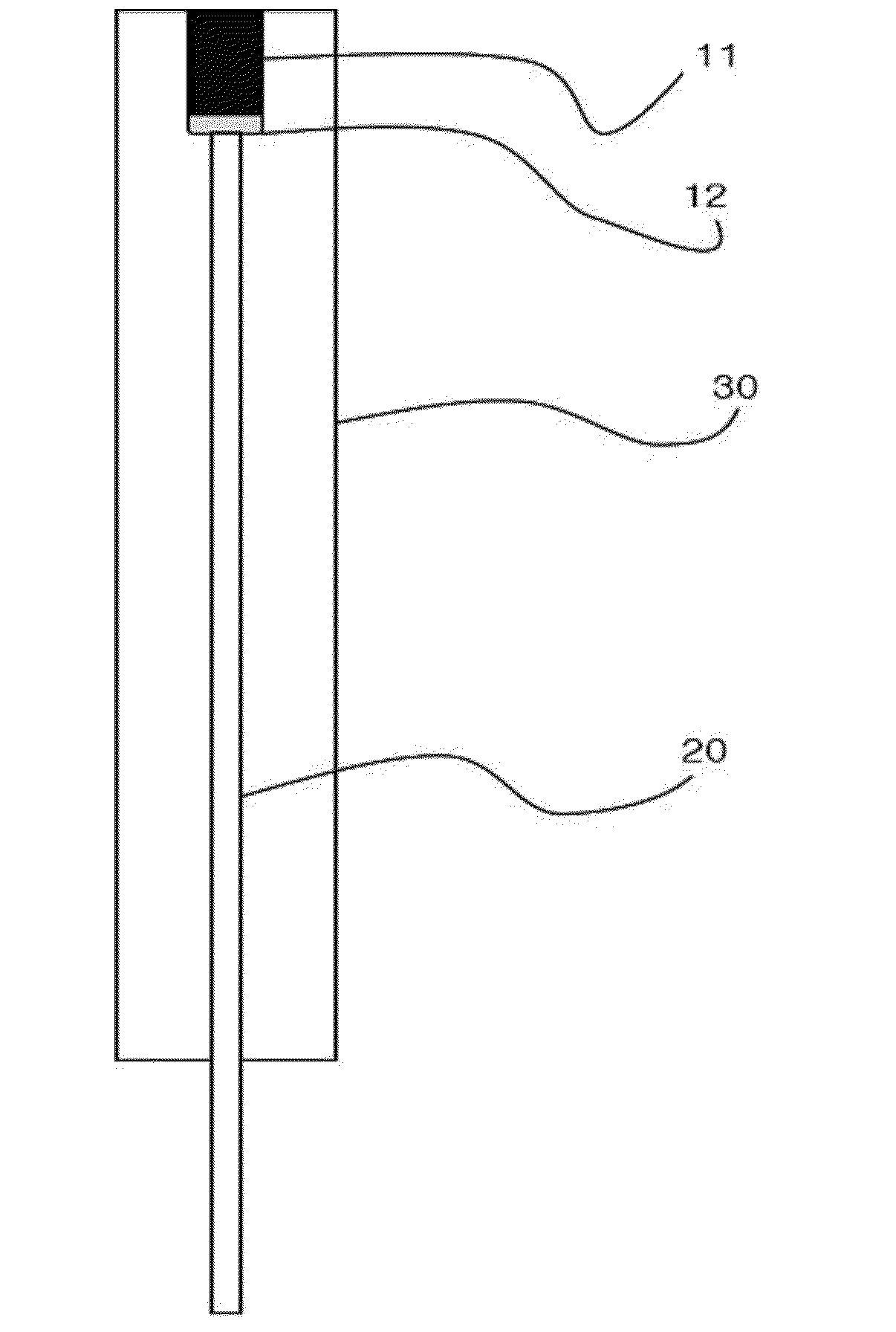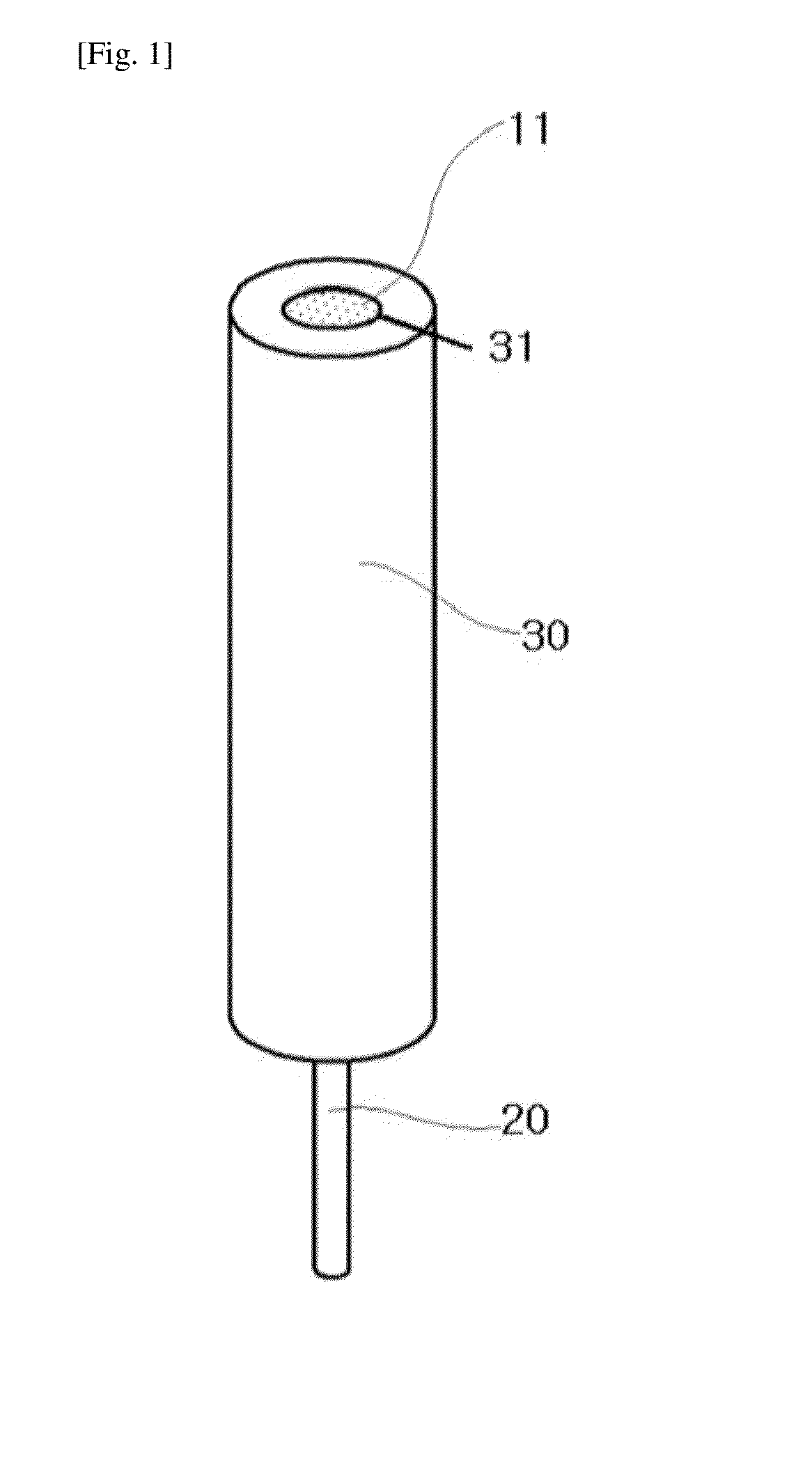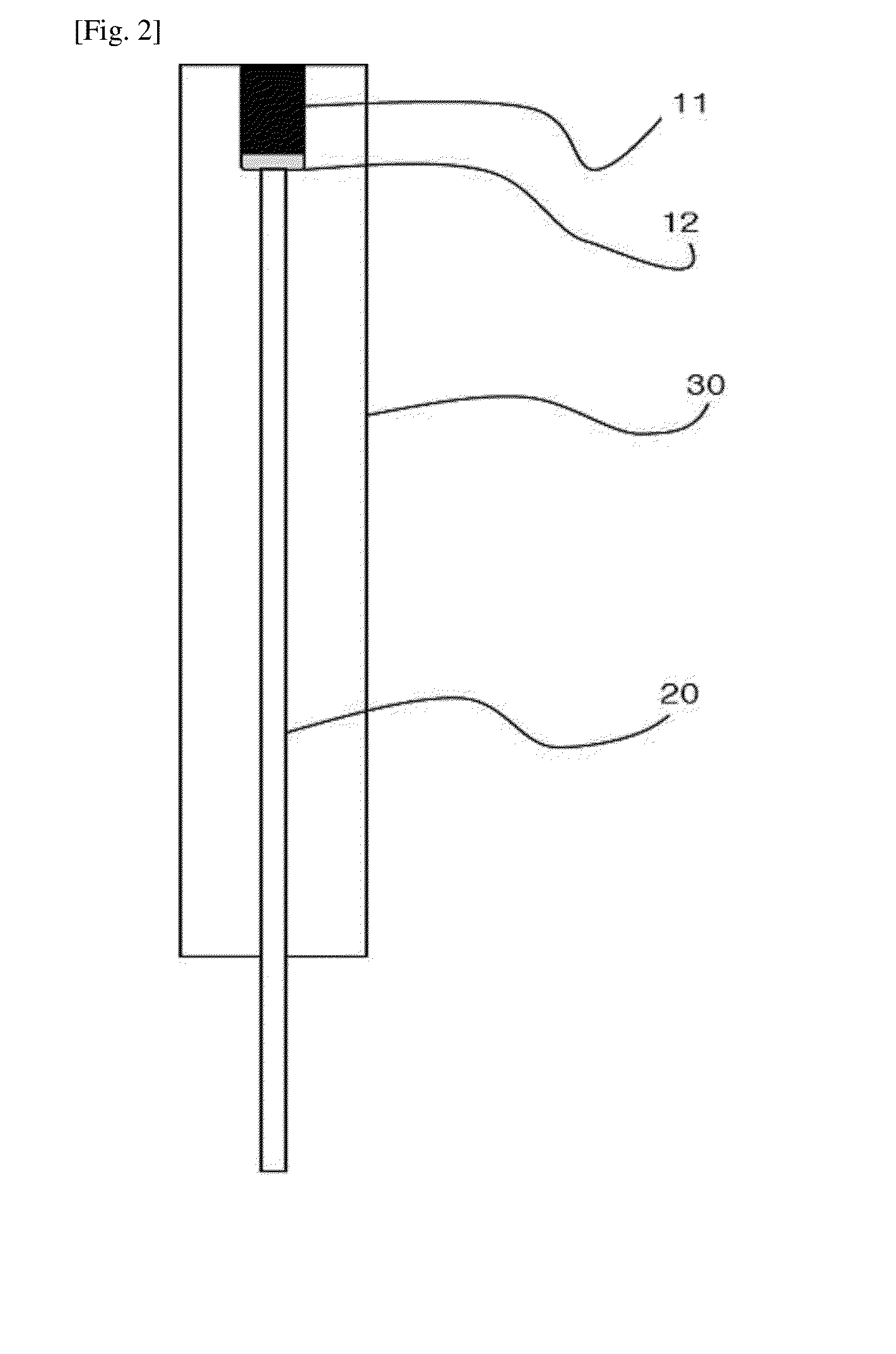Hydrogen ion electrode composed of composite material of NANO iridium oxide and polymer resin and enabling surface regeneration, ph sensor using same, and method for manufacturing same
- Summary
- Abstract
- Description
- Claims
- Application Information
AI Technical Summary
Benefits of technology
Problems solved by technology
Method used
Image
Examples
example 1
Example for Preparing Nano Iridium Oxide
[0093]First, 2 g of (NH4)2IrCl6 was added to a 500 ml round-bottom flask, 250 ml of deionized water was added to dissolve the (NH4)2IrCl6, and then 0.1M NaOH was slowly added while stirring the resultant solution well with a magnetic stirrer to adjust pH to 8 to 9.
[0094]The round-bottom flask was equipped with a condenser, and the solution was shaken well and heated in a water bath at 95° C. for 30 minutes, and then cooled to room temperature.
[0095]The solution was changed into a solution containing suspended precipitate which had turned dark blue from brown. While the pH was measured again, 0.1M NaOH was added to adjust the pH to 8 to 9, and the solution was heated at 95° C. for 30 minutes and cooled to room temperature.
[0096]This procedure was repeated 6 to 7 times, the pH of the solution was fixed at 8 to 9, and 1 to 10 nm-sized nano iridium oxide particles and / or aggregates thereof formed in the solution were collected, washed and then res...
experimental example
Confirmation of Sensitivity of Electrode
[0111]A sensitivity of the hydrogen ion electrode composed of the composite material of nano iridium oxide and a polymer resin (marked as electrode #29: containing 37% nano iridium oxide as measured by thermogravimetric analysis) was measured.
[0112]A commercial pH glass electrode was dipped into an universal buffer solution having a composition of 0.01 M phosphoric acid-boric acid-acetic acid-potassium chloride to adjust a pH of the solution to 3, and the electrode potential versus an Ag / AgCl (3.0 M KCl) reference electrode was measured while the pH was changed in a range of 3 to 11 by adding potassium hydroxide and nitric acid. The result is shown in FIG. 5. Here, the pH is increased to 11, and then repeatedly changed to 3 by adding nitric acid.
[0113]FIG. 5 is a graph showing a potential change according to the pH change of a hydrogen ion electrode composed of a composite material of nano iridium oxide and a polymer resin in an example of the...
PUM
| Property | Measurement | Unit |
|---|---|---|
| Size | aaaaa | aaaaa |
| Electric potential / voltage | aaaaa | aaaaa |
| Nanoscale particle size | aaaaa | aaaaa |
Abstract
Description
Claims
Application Information
 Login to View More
Login to View More - R&D
- Intellectual Property
- Life Sciences
- Materials
- Tech Scout
- Unparalleled Data Quality
- Higher Quality Content
- 60% Fewer Hallucinations
Browse by: Latest US Patents, China's latest patents, Technical Efficacy Thesaurus, Application Domain, Technology Topic, Popular Technical Reports.
© 2025 PatSnap. All rights reserved.Legal|Privacy policy|Modern Slavery Act Transparency Statement|Sitemap|About US| Contact US: help@patsnap.com



